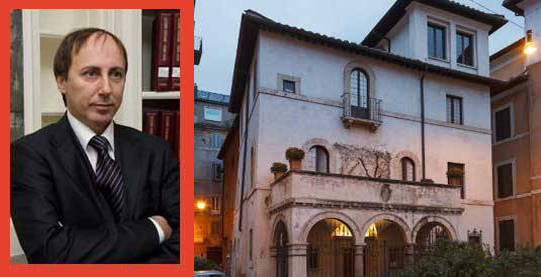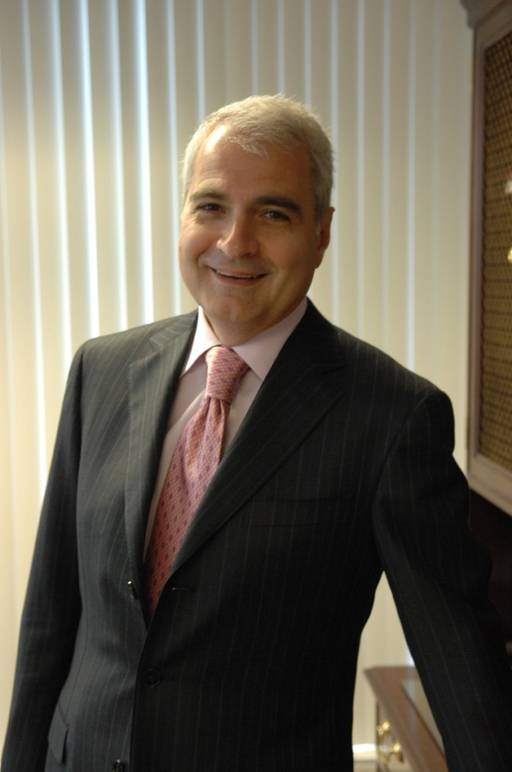CPAs Without Borders (Part One). "Helping Italians do business in the US takes very attentive cultural mediation." A Conversation with Paolo Siniscalco
Click here for the interview with Rocco Totino >>
Paolo Siniscalco is the co-founder of the Italian accounting firm Siniscalco & Partners, headquartered in Rome. He specializes in taxation and in general business consulting. Siniscalco is also experienced in mergers and acquisitions–on national and international levels–and in the restructuring of industrial groups.
How was the idea born for a meeting between Italian and American accounts?
The Internationalization Committee of the Italian Board of Certified Public Accountants had organized a trip to the United States for 150 colleagues. Aside from this institutional component, I thought that it was the right occasion to put them in contact with American professionals in a convivial environment.
What better occasion than this to organize a meeting in a prestigious American firm? So, I made arrangements with the former president of the CNDCEC, Gerardo Longobardi, and the organizer of the trip, Filippo Invitti (member of the Committee), who liked the idea. Then I invited professionals from Grassi & Co., and also from other accounting and law firms. It was a unique opportunity for an exchange of experiences between professionals from both continents.
You laid the first stone of an important framework that evening.
It was, above all, an opportunity for networking, and we’re already thinking of other things. With the expected merger in Italy between my firm, Siniscalco & Partners, and Grassi & Co., we wanted to give continuity to all of the meetings conducted by professionals. The merger hasn’t happened yet, but we are on the verge of doing it; we’re negotiating the terms.
You’ve been here in New York for three years. You worked hard for this.
The motivation for my coming here, and for the merger, is that Grassi & Co. wanted to become international. They wanted to have a more prominent presence in Italy. Since I had the structure with my firm in Italy, and I’m very well rooted and connected there, the idea of a partnership, the origin of Siniscalco, Grassi & Co.–in Italy came to be. After the new merger, the plan is to assemble Italian professionals spread out over the joint territory in a structure of 100/150 people, and along with Grassi & Co. (with its 300+ professionals), support clients in cross-border transactions between the two countries. In a few words, we see it as a highly-skilled, dedicated Italian-American office.
What do you think about differences between the world of Italian accountants and their American colleagues? What brings them together?
They’re two completely different worlds. There are pros and cons on both sides, but this alliance will better service the clients of both countries: whether Italians, Americans, or Italian Americans. What I saw with American accountants is their difficulty communicating with Italian clients, and vice-versa, because of the different approaches of the two professional systems–the Italian client is used to having the accountant take care of all his or her needs as a general counsel, which is a feature not present in American accountancy. As I’m used to saying: with Italian clients, you need to speak Italian, not just for linguistic reasons but also for cultural sensibility. It takes attentive mediation.
The laws are different, of course, but there are also different financial and accounting tools that are often difficult to use side by side. It happens that many errors are made, some even unknowingly.
In fact, I’m trying to work on this. Often, American accountants see only what’s happening in the United States, but not what’s happening in Italy. The same is true for Italians who are concerned about what’s happening in Italy; they don’t see what's happening in the United States. Unfortunately, when a company is Italian and works in the United States, or vice versa, it’s important to be aware of both systems.
Could you give us an example?
One of the mistakes that Italians make when they come to the United States is that they open businesses and appoint themselves administrators, but they are residents of Italy. Their American accountants fail to tell Italian clients that this may be a case of “relocation abroad,” a regulation that requires the US-based operation to submit a tax return in Italy, despite the fact that is not physically present in Italy.
There are also cases of American citizens, or green card holders, who live in Italy and, according to U.S. law, have to file a tax return and pay taxes in the United States, or be subject to a penalty.
---
MORE INFO:






































i-Italy
Facebook
Google+
This work may not be reproduced, in whole or in part, without prior written permission.
Questo lavoro non può essere riprodotto, in tutto o in parte, senza permesso scritto.